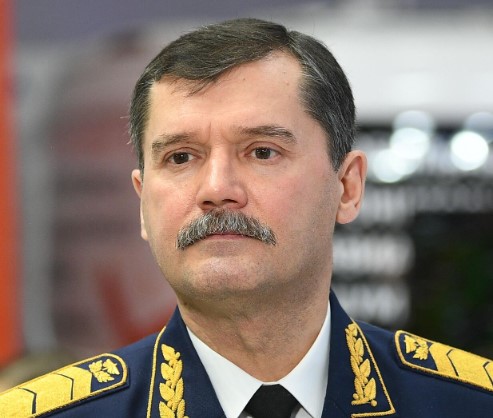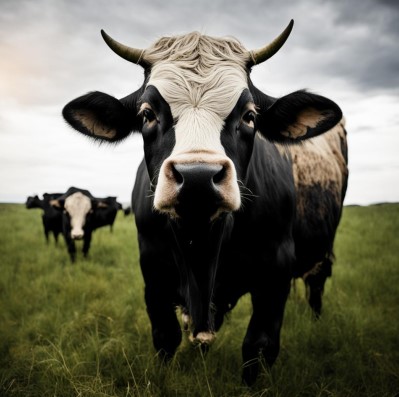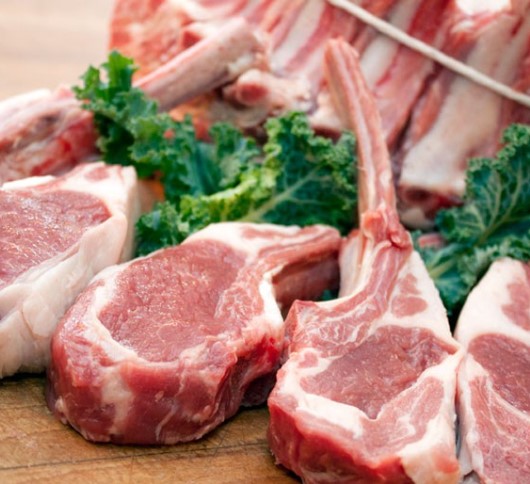The largest airlines in Russia received a record profit against the backdrop of sanctions

 PIONEER MEIZHENG BIO-TECH (5 in1) JC0586 - Antibiotic tests 5 in 1 / Rapid tests for determining the residual amount of β-lactams, tetracyclines and cephalexin in milk, whey
PIONEER MEIZHENG BIO-TECH (5 in1) JC0586 - Antibiotic tests 5 in 1 / Rapid tests for determining the residual amount of β-lactams, tetracyclines and cephalexin in milk, whey Rapid tests PIONER 5 in 1 for the determination of sulfonamides, tylosin, tilmicosin, lincomycin, erythromycin, fluoroquinolones
Rapid tests PIONER 5 in 1 for the determination of sulfonamides, tylosin, tilmicosin, lincomycin, erythromycin, fluoroquinolones
Суммарная чистая прибыль 27 ведущих пассажирских авиакомпаний России по итогам прошлого года составила 87,8 млрд руб., что в 2,8 раза больше, чем в 2021-м. Это следует из отчетности компаний по РСБУ, которую проанализировал РБК.
Более половины этой суммы (47,8 млрд руб.) пришлось на два крупнейших частных перевозчика — S7 Airlines (контролируется семьей Владислава Филева) и «Уральские авиалинии» (принадлежит Сергею Скуратову): 34,4 млрд руб. (рост к прошлому году в 2,3 раза) и 13,5 млрд руб. (рост в 2,5 раза) соответственно. Для обеих компаний такой результат — рекорд как минимум за шесть лет (2017–2022 годы). Из топ-5 авиакомпаний также отчитался лоукостер «Победа» (входит в группу «Аэрофлот»): его чистая прибыль составила 15 млрд руб. (рост в 4,4 раза), достигнув максимума с момента основания компании.
Крупнейший по пассажиропотоку перевозчик «Аэрофлот» и его «дочка» «Россия» последний раз раскрывали финансовую отчетность по итогам 2021 года. Тогда «Аэрофлот» получил 45,6 млрд руб. чистого убытка, «Россия» — 382 млн руб. чистой прибыли. После начала спецоперации на Украине и введения беспрецедентных международных санкций против России «Аэрофлот» прекратил раскрывать финансовые показатели. «Мы не хотим по понятным причинам вводить в стресс наших партнеров, акционеров, инвесторов в силу высокой волатильности», — объяснял в интервью РБК глава «Аэрофлота» Сергей Александровский. По его словам, возобновление публикации отчетности возможно только после того, как компания «стабилизируется с точки зрения производственных и в конечном итоге финансовых показателей». По итогам работы в 2022 году авиакомпания «Россия» была «планово убыточной», сообщил РБК ее представитель, не раскрыв подробности.
RBC sent inquiries to the press services of Aeroflot and S7 Airlines. A representative of Ural Airlines declined to comment.
Who was in the sample
Almost 100% of Russian civil aviation passenger traffic is accounted for by 35 airlines. As of April 21, 27 of them published their RAS financials for the past year. In addition to Aeroflot and RUSSIA, Yakutia, Severstal, KrasAvia, UTair (part of the Utair group), Yamal and Art Avia have not yet disclosed the data.
Of the airlines that disclosed their financial statements, the top 5 in terms of net profit, except for S7 Airlines, Pobeda and Ural Airlines, included Red Wings (4.4 billion rubles against a loss of 1.9 billion rubles in 2021) and Utair ( 4.1 billion rubles, an increase of 6.3%).
Why profit has increased
Last year, the passenger traffic of Russian airlines decreased by 14.2%, to 95.2 million people. Transportation within the country fell by 11.2% (the main reason is the closure of 11 southern airports), to 77.7 million people, outside it - by 25.6% (the key factor is the ban on flights to the European Union). International sanctionshit Russian airlines hard, Marina Pacheco, chief accountant of Icarus airline, notes in the company's financial statements: “In a few days, Russian airlines have lost international routes, leasing, maintenance of foreign aircraft, insurance instruments, etc. The sanctions imposed by the West in 2022 had an impact on Russian civil aviation, which was closely integrated into the global market.” However, despite this, Icarus finished last year with a record net profit of 248.6 million rubles.
Read pioneerprodukt.by How “Adyghe cheese” and “Vologda butter” are banned in Russia How we plan expenses and incomes in times of crisis — case study by AB InBev Efeswill they help you get rich?To neutralize the effect of sanctions, the Russian authorities had to provide additional state support to aviation enterprises, said the HEAD of the Federal Air Transport Agency, Alexander Neradko, last March. In total, according to the Association of Air Transport Operators (AEVT, which unites the largest airlines), civil aviation received a record state support last year - 172.3 billion rubles, including 145 billion rubles. for the first time (of which 100 billion rubles - to support domestic transportation). In addition, due to last year's jump in jet fuel prices, payments to airlines under the damper mechanism amounted to 98.6 billion rubles. In his opinion, first of all, thanks to these factors, it was possible to ensure "the relative financial and economic stability of most airlines." The allocated subsidies made it possible to prevent an increase in the cost of tickets for the population and retained the conditions for the availability of air transportation, Neradko emphasized. “The average ticket price (fare with fees) for domestic flights has really decreased - for example, in June by 10% by June 2021,” Aleksandrovsky said.
Subsidies and cost optimization helped airlines show net profit, says Alla Yurova, junior DIRECTOR for corporate ratings at the National Rating Agency. Thus, the intensity of use of the operated park has increased (according to the AEVT, the seat occupancy rate increased by 2.5 percentage points last year, up to 84%), she notes.
From the reporting under RAS of some companies, it can be seen that the amount of net profit is mainly formed by subsidies, says Alexander Divakov, director of the corporate ratings group at the National Credit Ratings agency. Deferred lease payments, the cessation of complex and expensive maintenance of aircraft abroad, as well as the reduction in the cost of purchasing new components and spare parts, which were used instead of stock purchases until last year, could become cost-saving factors, adds aviation expert Grigory Pomerantsev. Due to the termination of cooperation with the global provider Lufthansa Technik, the cost of spare parts really decreased, and the flight hours were record, admits a top manager of a major Russian airline, which also increased profits.
Profit growth was also helped by a significant reduction in the number of direct foreign flights from Russia, which increased fares on the remaining international routes, says Pomerantsev. “Tickets for international flights have, of course, increased in value. But this is a separate story, connected more with a limited offer of holidays abroad, ”said Aleksandrovsky.
“Airlines managed to adapt to the current conditions and ended last year with positive financial results, which were higher than expected before the imposition of sanctions. This year, flights to international destinations are partially resumed. We also note that this year the Ministry of Transport of Russia predicts higher passenger traffic than in the past, ”the press service of the Ministry of Finance said.
What result to expect this year
This year, the Ministry of Transport has planned an increase in passenger air transportation by 6.4%, to 101.3 million people. At the end of March, the head of the department, Vitaly Savelyev, noted that companies were already exceeding this plan. According to the results of the first quarter, Aeroflot Group transported 9.5 million people (plus 11.3%). According to the AEVT, in January-March, all airlines increased passenger traffic by 7.1%, up to 21.2 million people, the seat occupancy rate increased by 7.4 percentage points, up to 85.8%. If existing trends continue, this year the passenger traffic of airlines can grow to 111 million people, that is, return to the level of 2021, Tasun believes.
But, according to the head of the AEVT, the industry still needs state support, because even last year, airlines, according to preliminary data, received a loss on sales in the amount of 144 billion rubles. (operating loss). To assess the state of the industry, it is better to use not financial indicators according to RAS, but the data of form No. 67-GA (report on the financial activities of airlines and air transport organizations), which deals with operating results, since net profit (loss) activities of airlines, the representative of the association explained earlier.
According to Igor Smirnov, Senior Director for Corporate Ratings at Expert RA, the current state of airlines is more of a “controlled dive than success,” although carriers have experience in managing costs in stressful situations after the height of the covid-19 pandemic in 2020 . “Despite the profit, the [carriers'] revenue is falling (for the 27 largest carriers it fell by 7.4%, to 661.5 billion rubles -) <...>. And paper articles also affect profits,” he explained. “It is unlikely that we will be able to work with the same profit. There is a lot of heavy aircraft maintenance this year, which will negatively affect the final financial result,” says a top manager of a major airline.
The AEVT expects that state support for the industry will remain at the level of last year. However, so far only 25.3 billion rubles have been allocated to companies. The provision of subsidies by analogy with last year has not yet been approved, so tickets within Russia may rise in price by 15-30%, and the number of flights may decrease, Deputy Transport Minister Igor Chalik warned on April 17. But two days later, he clarified that the increase in ticket prices would not exceed the inflation rate in Russia (5.3%). The official explained that the previous assessment was based on data from airlines: each carrier develops several scenarios for itself, including a negative one. Then the press service of the Ministry of Transport reported on the ongoing work on the allocation of additional subsidies to airlines for the upcoming summer season. But the Ministry of Finance noted that the decision to record support last year was made due to the suspension of international flights, and in 2023 they are developing. “Until now, there have been no motivated justifications for providing state support [this year], by analogy with last year, to the Russian Ministry of Finance,” they added.
Read together with it:
- В Раменском выведена новая порода кроликов — Великородская белаяЭто значимое событие обозначает первую отечественную породу, разработанную для племенного и промышленного производства за последние 60 лет. Глава Раменского муниципального округа Эдуард Малышев посетил институт, где директор, доктор биологических наук Глеб Косовский, провел ознакомительную экскурсию для почетных гостей. Институт служит научно-методической базой для разработки технологий в области ...
- Боливия экспортирует говядину на сумму 797 миллионов долларов и вводит новые цифровые сертификаты для внешней торговлиЭкспорт говядины из Боливии в период с 2021 по 2025 год достиг 797 миллионов долларов. Китай является основным рынком сбыта этого мяса, на который приходится 74% продаж, сообщила Карина Серрудо, генеральный директор Национального таможенного управления. Параллельно с этим ведомство включило сертификат безопасности экспортных пищевых продуктов для говядины в систему «Единое окно для внешней торговл...
- Bloomberg узнал о плане G7 значительно ужесточить санкции против РоссииНовый пакет санкций будет включать меры, в частности, против энергетики, финансов и военной промышленности, а также крупнейших нефтяных компаний России. Разработку пакета G7 планирует завершить в октябре, выяснил BLOOMBERG Страны «Большой семерки» (G7) приближаются к соглашению о значительном ужесточении санкций в отношении России, сообщает агентство Bloomberg со ссылкой на проект заявления. «Мы с...



















































